Finding and Listing Pokémon Cards
The Pokémon TCG has been around since 1996 and has thousands of different cards. This presents a problem because there aren’t that many different Pokémon. The result is a lot of different cards for each Pokémon. For Cardmarket users, this can make it hard to find the card you want. After all – you can’t just search Pikachu to find one specific Pikachu when there are hundreds.
This page will explain how to search our Pokémon catalog and list your products easily and efficiently.
Using the Search Bar
The easiest and most direct way to find your cards is with the search bar. Once you’ve found the correct product page, it’s easy to buy and list the cards you have. There are a couple ways to target specific Pokémon cards when searching.
The first and easiest is to use the collector’s number – e.g., Charizard bs4 – which you can see on the right. Note that for two letter set codes like "bs", the code and number must have no spaces - "bs4", not "bs 4".
With the new search v2, more options are possible when searching using collector's numbers. You can search with spaces and dashes - "bs 4" or "bs-4" - and can even find partial marches with searches like "Charizard 4" or "Charizard bs". The partial searches will of course be less accurate because it will also show other Charizard's from the set in question or with the number four.
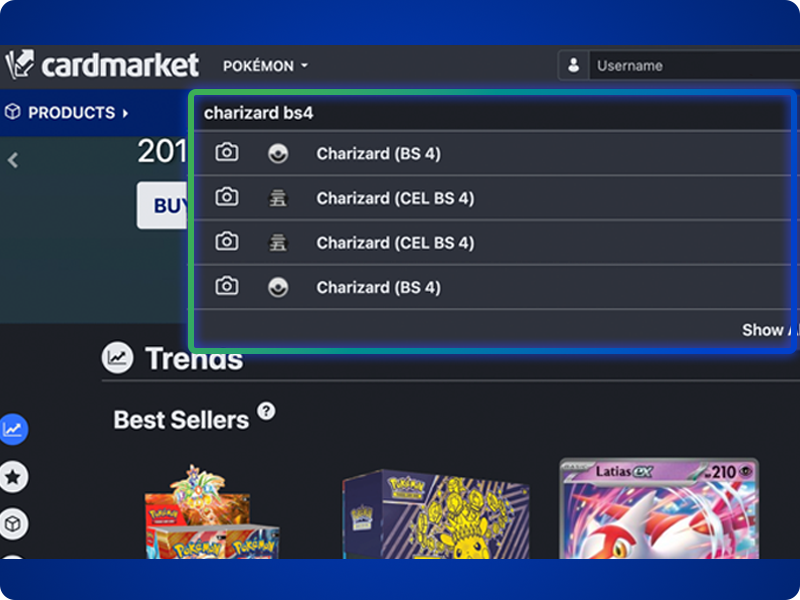
By searching Charizard bs4, you will see the base set Charizard with that collector’s number right away.
Sometimes you might not have a collectors number. In this case you can use an attack name from the card. Search Quaking Punch and you’ll find Seismitoad EX right away! You can also search the name and attack name simultaneously if you prefer.
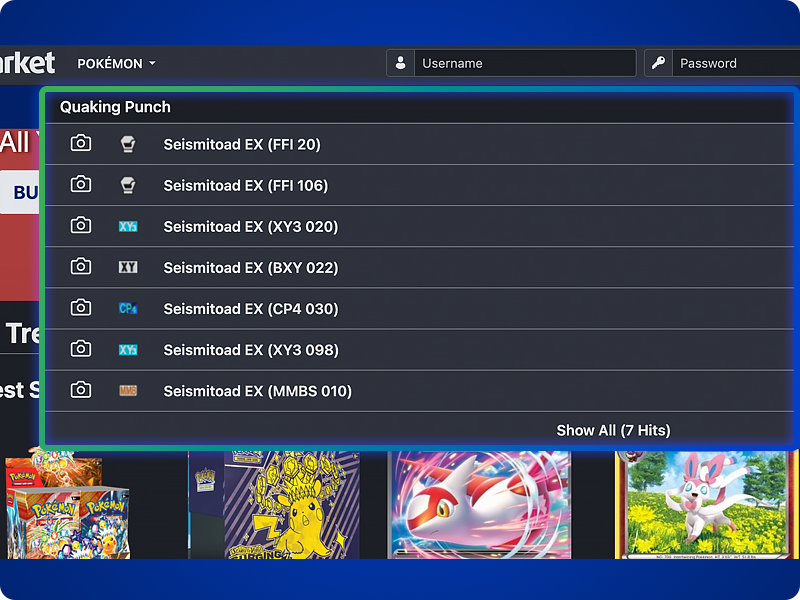
By searching Quaking Punch, you’ll see Seismitoad EX right away.
Japanese vs. Western Cards
Like with Yu-Gi-Oh!, Pokémon distinguishes between Japanese cards and western language cards. Because of this, you cannot sell Japanese-language cards on western language product pages. Fear not though, all Japanese singles have their own product pages which you can find and use to sell your cards.
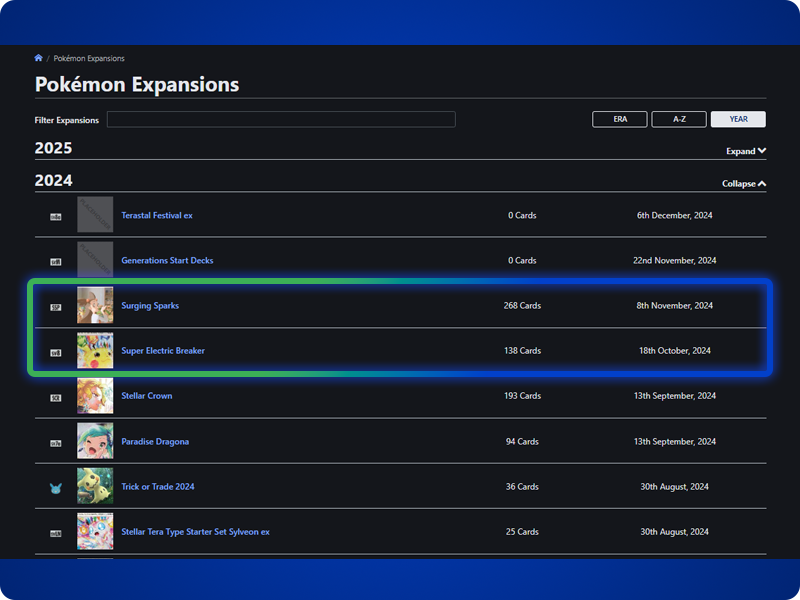
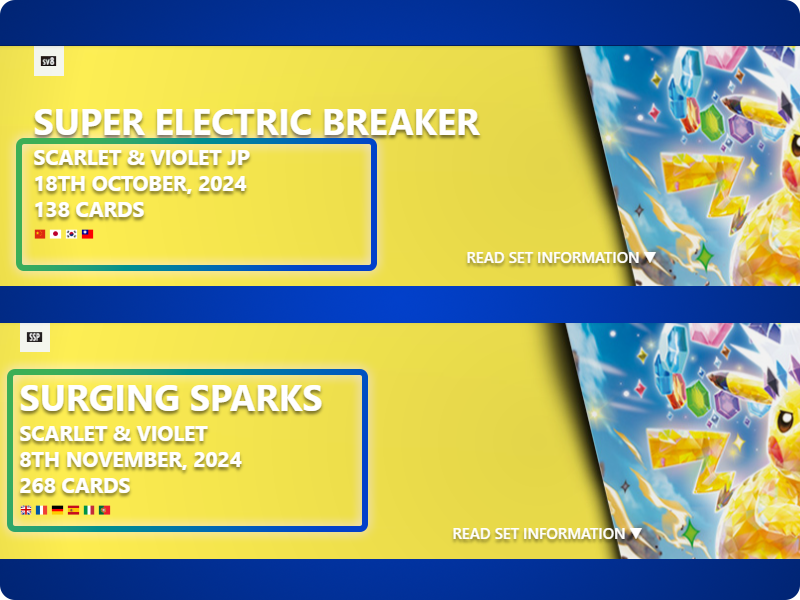
All Japanese expansions will have “JP” on their title banner. Be sure to pick the correct version when selling your Japanese cards as we will remove any cards placed on the wrong product page without warning.
Pokémon Rarities
Pokémon cards come in a variety of rarities. There is no real need to explain the rarities players already know, so we’ll use this section to discuss some Cardmarket specific rarities as well as types of cards that don’t fit within the regular TCG.
In addition to the standard rarities we have added a Fixed rarity, which should be used when a card has no assigned rarity – a feature very common in Japanese Half Deck products or special sets.
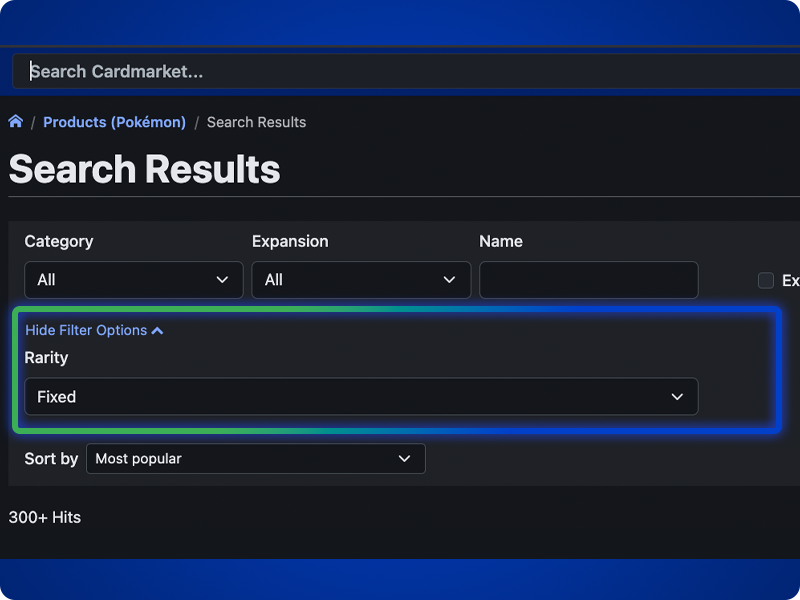
Online code cards – referred to as Live code cards after Brilliant Stars (2022) – contain a redeemable numeric card as well as a QR code for Pokémon TCG Live, the online game client.
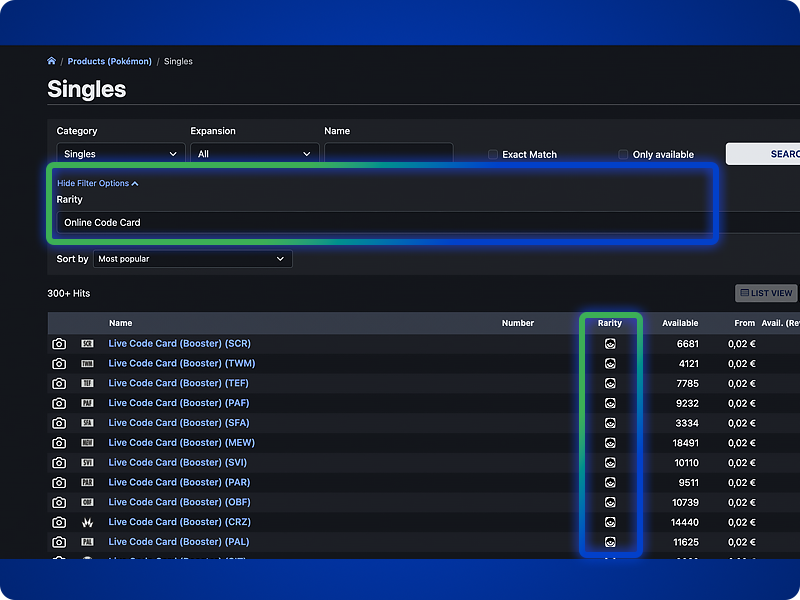
Oversized cards are, as the name suggests, cards too big to be played normally. These are decorative “jumbo” versions of regular cards.
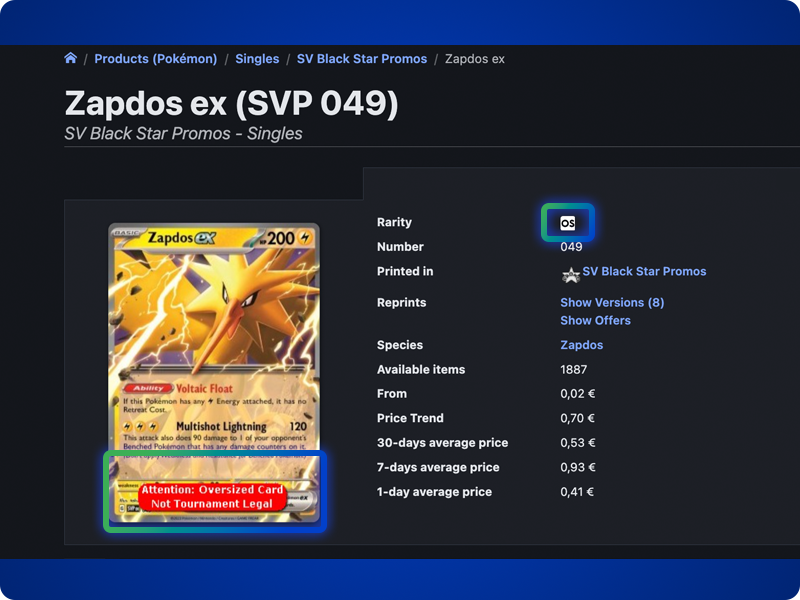
Attributes When Listing Pokémon Cards
On Cardmarket, Pokémon cards have five important attributes highlighted on the right:
- Language
- Reverse Holo
- Signed
- First Edition
- Altered Art
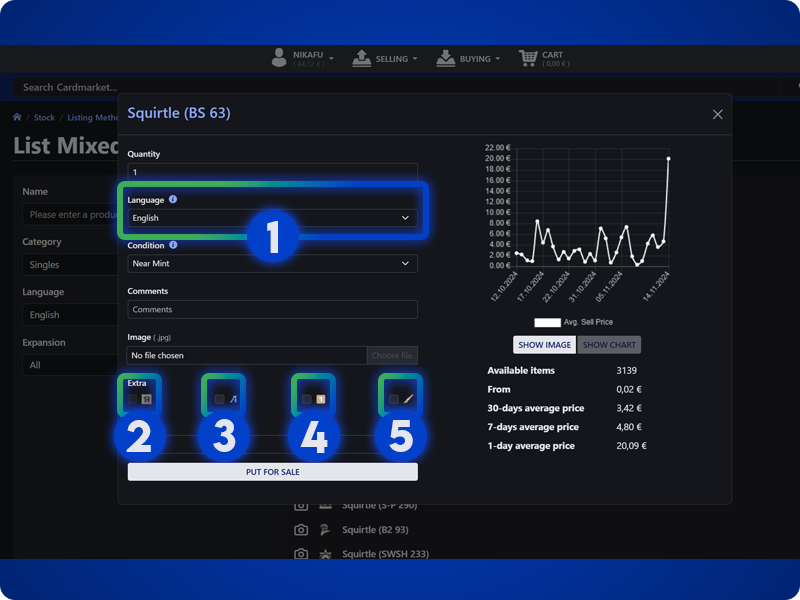
First Edition cards are easy to identify. For western cards, look for a stamp on the middle-left side of the card, underneath the art, with a black circle and the letters “EDITION 1”. For Japanese cards, look for the black “1” at the bottom right of the card, near the corner.
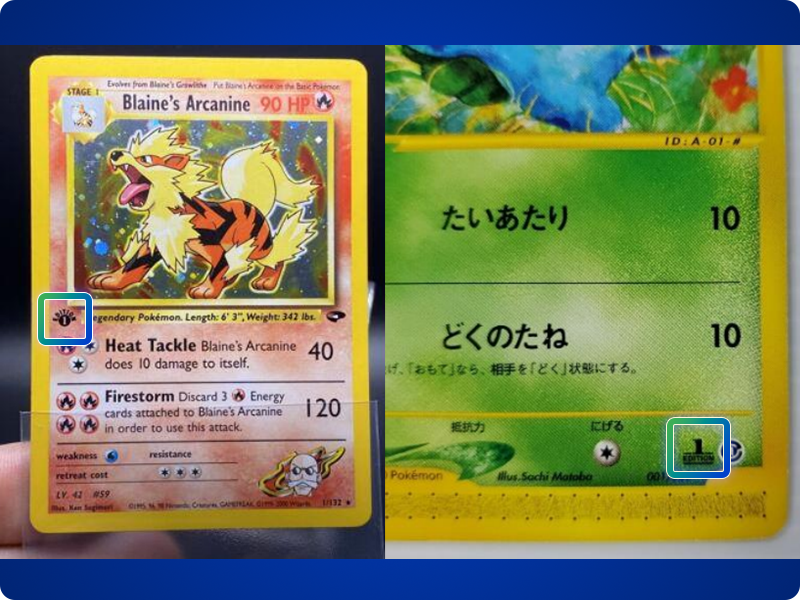
Language are split into two categories, Western and Asian. This is more than a geographic separation, with different expansions and card backs.
Western languages include English, French, German, Spanish, Italian and Portuguese and follow the western numbering and classifications.
Asian languages include Japanese, Korean, Traditional Chinese, and Simplified Chinese and follow Japanese numbering and classifications.
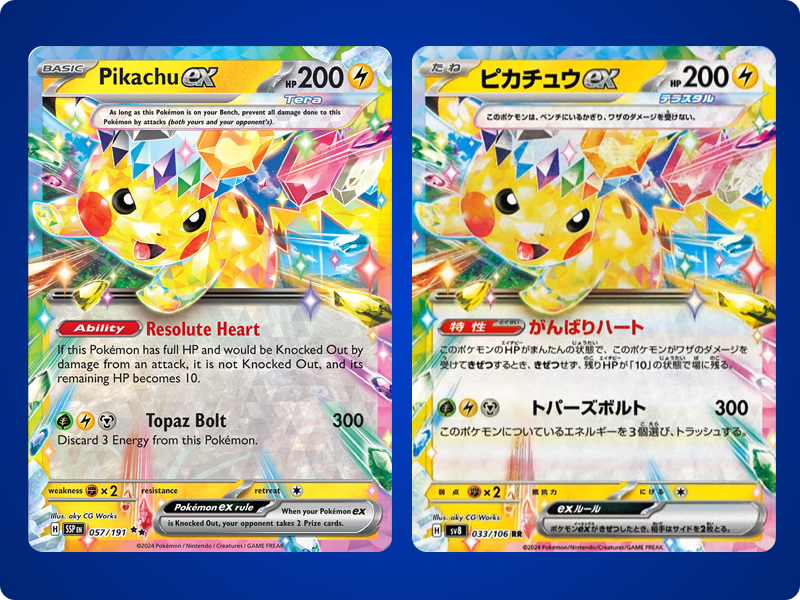
Japanese cards, specifically, have a long history of card backs you can find online. First released in 1996 as Pocket Monsters Card Game, Japanese card backs changed in December 2001 with the rebranding as Pokémon Trading Card Game. Aligning it with its North American counterpart released in 1999.
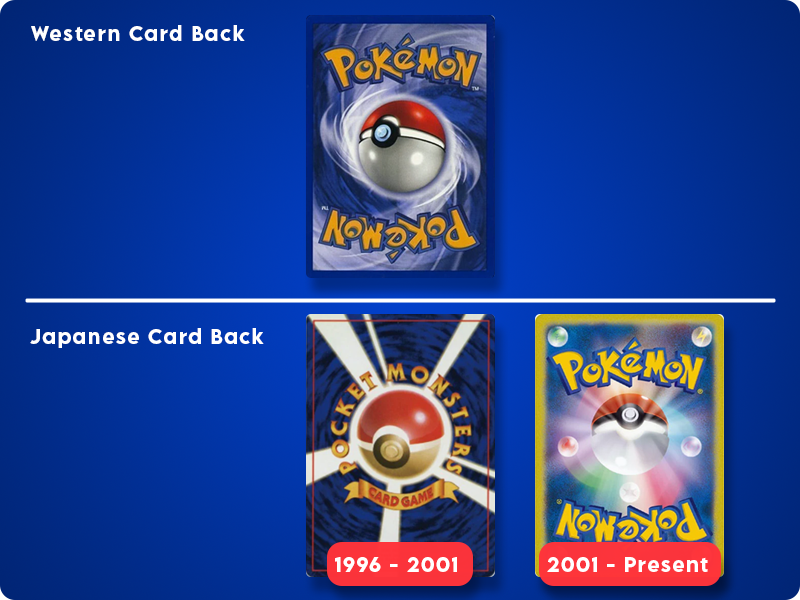
Reverse Holo is not a rarity. Regular Holofoil cards are a rarity in the Pokémon TCG, where the card art has a holofoil coating. Reverse Holos do not have a holofoil coating on the card art, but rather on the body of the card – hence the name. They first appeared in Legendary Collection (2002) and have been a feature of every major expansion since, typically changing design with each block.
Japanese sets typically don’t have reverse holos, saving them for promos or special/commemorative expansions. Listing regular holofoil cards (a rarity) and reverse holo (an attribute) is the most common mistake sellers make on Cardmarket, so be careful to correctly identify your cards when making a listing!
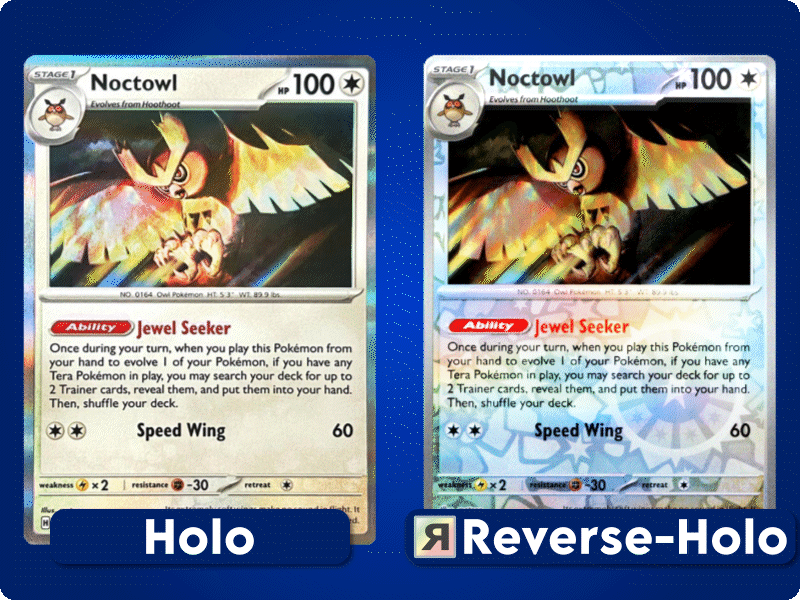
Additional Cards
Versions can be quite complicated for Pokémon cards. Sometimes an individual card, like Espathra [Stance / Glittering Eyes] will have multiple non-holo versions from different expansions. These can be very difficult to distinguish from one another so be careful not to assume your card is from the main set, when it might be a reprint.
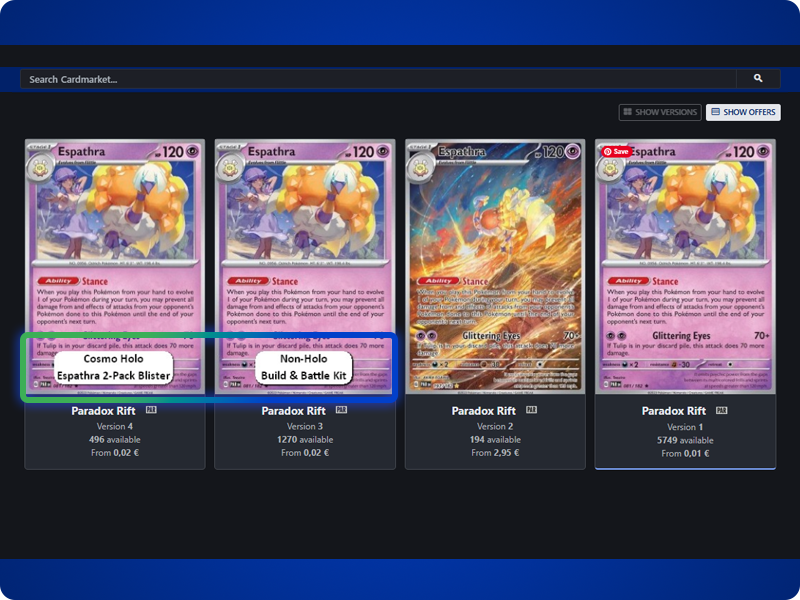
We hope this guide helps you identify and find the cards you’re looking for in the Pokémon catalog.
If you still have any questions or wish to view your open or closed tickets, please visit the Help Desk.
